This article is part of the My First Queer series, a site-wide series of articles written by some of our non-straight Fandomentals contributors. Each will contain their thoughts on their first experiences with queer media and what it meant to them. Enjoy!
Looking back at the other My First Queer articles, I have to say my experience is going to be rather different – but then again, each of those was different, too, and the experience is varied. Still, mine differs in the way that it is much more focused on attraction, instead of the more generalized realizations of queerness or powerful stories of love.
The second is definitely because there were none to be had. The first is, perhaps, because I grew up in a very liberal household. I knew about the existence of the the letters of the LGBTQIA acronym — except queer itself, I guess, because it doesn’t really have a Czech equivalent — probably by the time I started middle school, and certainly by the time I was fifteen. There was no need to discover the idea of queerness.
What was an entirely novel concept, on the other hand, was the idea that it could somehow relate to me, or to anyone close to me.
After all, in most media queerness was — and still is — only incidental, something that happens to the side characters, and as everyone is a protagonist of their own story, I never considered that it would be something to touch me in person. When I try to think of the first piece of media where I encountered a non-straight relationship, it’s difficult. I have been reading fantasy intermittently since I was eleven. Some of that fantasy probably contained background queer characters in a casual way that went well with my general expectations of “this is something that exists somewhere in the world but doesn’t concern me in any way”.
I do remember the first book where a non-straight relationship was at least a little bit prominent: the Witcher Saga by Andrzej Sapkowski. If you know Sapkowski or have read the books, you know it’s not…exactly an ideal introduction into the world of queerness. The protagonist — or one of the protagonists — of the book, Ciri, runs away from an attempt on her life, almost dies in the desert, and finally joins up with a band of outlaws. The first night with them, she is molested and almost raped by one of the men. One of the other women stops him…and then slides into bed in his place.
This is the beginning of Ciri’s first romantic relationship, which ends with her lover/rapist being brutally murdered by a man who then proceeds to enslave Ciri. So, you know. Not exactly the pinnacle of representation, and definitely not something you would want to model your romantic life on.
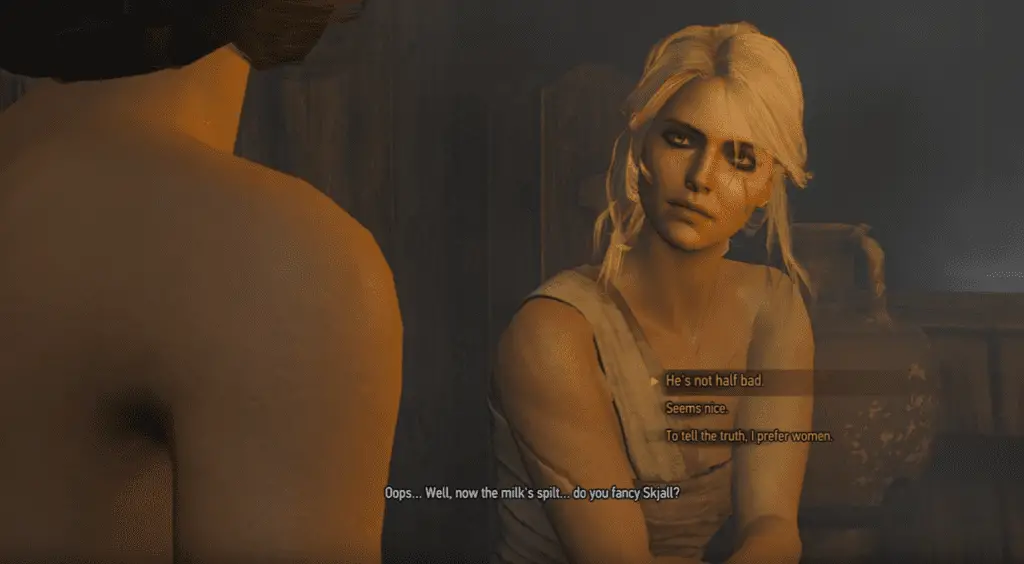
Sapkowski’s books have other mentions of wlw, too: the long-lived sorceresses being bored of their relationships with men and so trying women for a time until they discover it’s not any better. That caught my attention a little more.
I loved everything about Sapkowski’s sorceresses. Powerful, beautiful and arrogant, I can say with the benefit of hindsight that however over-the-top and mired in sexist stereotypes, they were a combination of my life goals and my wife goals.
However narcissist that sounds, the kind of person I want to be has always been similar to the kind of person I want to have, be they women or men, because I’ve always been more fan of the concept of “marriage of true minds” than “opposites attract.” That probably didn’t help with making matters clearer, since it provided a comfortable excuse for why I cared about them so much: I wanted to be like them.
The most important part, though, is that the sorceresses weren’t really queer. They were still predominantly depicted as straight, focused on the men and interested in them, and their gayness was only incidental, and always connected to men. That, combined with my real-life experiences, likely shaped my views for quite some time. Because the thing is, there was a lot of wlw women around me, but either none of them identified as bisexual, or I didn’t know they did. Just like in Sapkowski! Sleeping with both men and women was just what all the really cool girls did, right? And men found it hot.
What an amazing view to absorb.
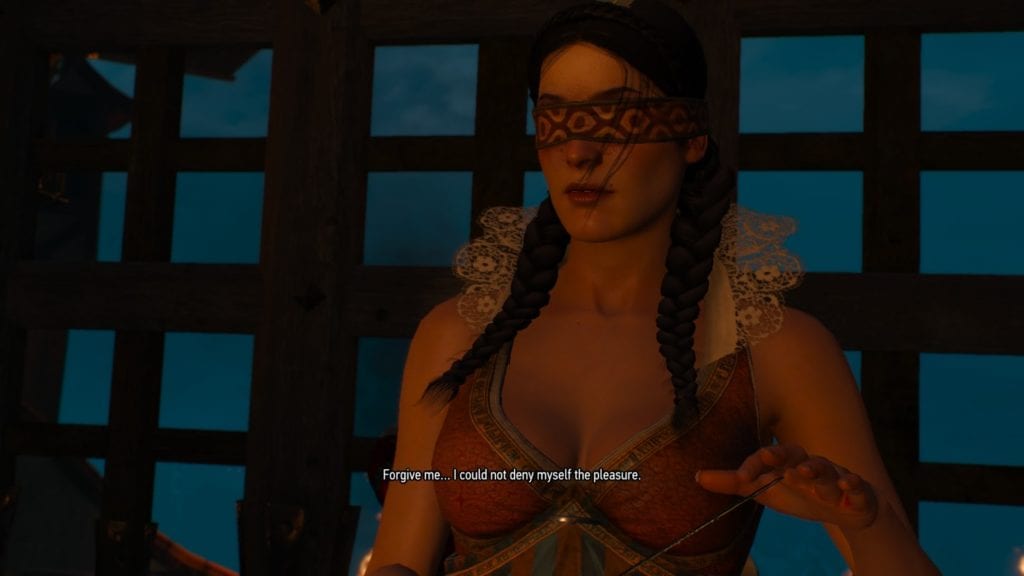
Sadly, it held through my actual first experiences with women, and of those around me. Looking back at it, it was insane. A good friend of mine was in a relationship with a girl, they even got fake-married, but I still thought of her as straight and didn’t take it seriously. After all, it was just a couple of gals being pals. In bed.
In short, Sapkowski was the piece of media during my adolescence that got the furthest in having me engage with female queerness, and it did not go very well. But there was another way my identity as a straight girl had the potential to be eroded. Not with explicitly queer women, but with (assumed) straight women I simply found hot. And boy, were there plenty.
Like I said, Sapkowski’s sorceresses hit me exactly in my weak spot. I have always been fascinated by the “evil queen” archetype. If I lived in a country where Disney animated fairy tales were the standard entertainment for children, I’m pretty sure my first queer would have easily and decidedly been Maleficent and the Evil Queen from Snow White. As it is, I only came across them later, and Czech fairy tale films don’t really have any properly evil queens to speak of, for some reason.
So as it was, my first glimpse of this was Circe.
I had a retold-for-children version of Odyssey when I was little, and it was my favorite book. Odysseus was an amazing hero and everything, but there were also beautiful illustrations in my version, and the women in those illustrations were really pretty. Particularly attractive was the evil sorceress who almost defeated Odysseus (and totally would have if he hadn’t cheated by getting help from the gods). She was a-ma-zing.
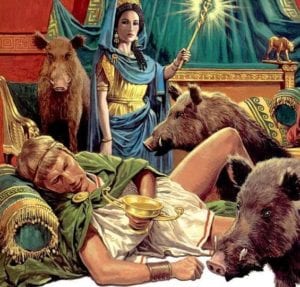
Not too long after, there was an encounter with Disney after all: I had a book version of Aladdin, and in Aladdin there was Yasmine. In particular, Yasmine in her slave outfit. Yeah, I know.
Looking back at it, I can hardly see for the amount of cringe I’m doing, and I could write dissertations on the orientalization and sexism specific to what can be found in those scenes. But my seven year old self didn’t know anything about that. I just knew that there was, you know, something about Yasmine in that outfit, being so clever as she pretended to be willing to rule alongside Jafar.
I mostly thought it was because she was wearing red and I liked red. Like I said, I was seven.
The next step on this way was the evil queen from Never-Ending Story 2. I remember always being frustrated when she pretends to be good in the middle of the film, because she lost like half of her sex-appeal – though again, I wouldn’t have put it that way when I was probably about ten at this point. Then came Sapkowski, and my love for his sorceresses. And around the same time, there came the most important stepping stone from the realm of media on my way to self-discovery: Monica Bellucci.
I honestly don’t remember how I first came across her. It must have been online, because going through her filmography, the only things I really recall seeing her in are the Matrix films, and before that I was only aware of Asterix and Obelix. And I distinctly remember thinking when it came out, as a connoisseur of the animated version: yeah, she’s a good fit for Cleopatra, she’s hot.
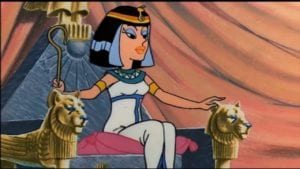
So, somehow, somewhere, I discovered Monica Bellucci, and I was immediately smitten. To this day, I consider her effectively the epitome of female beauty.
I was fourteen when Matrix Reloaded came out, and I really enjoyed the scenes with her. A lot. In fact, they probably make me recall that film in a much more positive light than it deserves. Soon after this, my computer was stuffed with all the pictures of her I could find, mostly of them lightly erotic. Hilariously, yes, I still believed I was straight.
I could continue listing all the other movies I saw with impressive evil queen/femme fatale types in them. Snow White and the Huntsman was a disaster of a movie. But the Queen, oh, the Queen! Well, I think you get the idea.
At any rate, Monica Bellucci was the first woman I have ever seen that I looked at and thought, yes, I want to have sex with her. Not even this, though, was enough to bring any change in how I understood my sexuality. Looking for the media that helped with that, the first media that actually included a healthy queer couple… That would be fanfiction. When I was over twenty, maybe even closer to my mid-twenties.
Yeah.
To be fair, if I had a varied romantic life in the years between, I probably would have figured things out sooner even without any books to help, but as I began dating my husband not too long after my Bellucci-induced awakening, that rather limited my exploration.
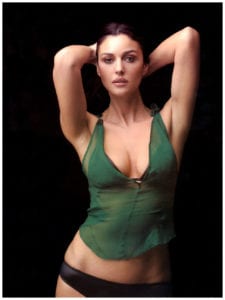
The fact still remains, though. It took twenty years of reading to come across a wlw couple worthy of the name. And it required fanfiction.
I read a lot, though I didn’t seek out queer books – I probably didn’t know that was a thing, to be honest, and if I did, I wouldn’t have searched them out anyway. I was straight, remember? But I read a lot, and varied things – detective stories, fantasy, literary fiction. In none of that did I come across a proper wlw relationship.
The first “femslash” fanfiction I read was a bunch of stories from the Harry Potter universe. It was mostly sexual relationships, combining various Hogwarts girl into pairs and seeing what happened. While fun, it didn’t do much to convince me to take my own preferences too seriously.
I can’t actually pinpoint the one story that did that. What I do know, though, is that as I moved from my reading from HPFF to FF.net and then to AO3, the number of wlw relationships that appeared in my reading increased. Though they were still mostly background relationships, they were at least treated more seriously than what I was used to.
Little by little, the stories chipped away at my denial. But I still can’t help to think that had Sapkowski been less of a sexist clown, and had two of his powerful women been badass wlw queens who ruled the Lodge of Sorceresses, I could have figured everything out so much easier.
In fact, that sounds like an AU fanfiction someone should write.

